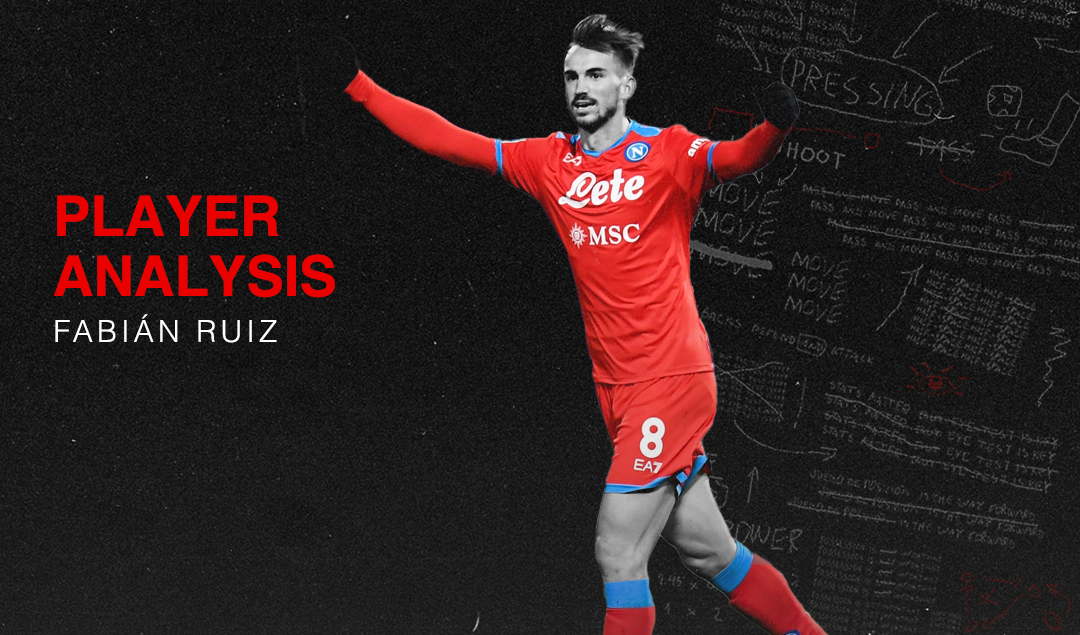Fabian Ruiz – Spain’s Secret Weapon in Euro 2024
Coming into the 2024 European Championship, there was much discourse about the exciting Spanish wingers – Barcelona’s 17-year-old superstar Lamine Yamal and Athletic Club’s electric forward Nico Williams. And rightfully so – as evidenced by the opening goal in the final against England, where the two combined to give their nation a brief lead.
The tournament also marked the remontada of the overlooked Chelsea left-back Marc Cucurella, who proved doubters like Gary Neville wrong with consistently reliable performances throughout the Euros. Other much-talked-about names also included Manchester City’s Rodri, the official player of the tournament, and RB Leipzig’s Dani Olmo, who lit up the competition during the knockout stages – scoring one and assisting three goals.
However, among them lay a quiet but productive performer, who has not gone unnoticed but deserves more flowers for being a linchpin in Luis de la Fuente’s operation and surprising many as Spain’s creative impulse – Fabián Ruiz.
Tactical Insights: Leveraging Build-Up, Positioning in the Left Half-Space, and Goal-Crashing Impact
Ruiz was a key weapon in Spain’s well-balanced midfield trio. The versatile Paris Saint-Germain player was involved in all aspects of De La Fuente’s system. Whether in the build-up phase, progression through the middle, or chance creation in the final third, Ruiz was always involved.
In the build-up, if the opposition executes a hybrid man-marking and zonal high press – Ruiz could aid Spain’s intention to play out from the back by increasing the numerical superiority with plus-two overload. His positioning will lead to one of two outcomes. Either the man-marker does not follow to expose the center of the pitch – allowing Ruiz to collect the ball in space and progress possession.
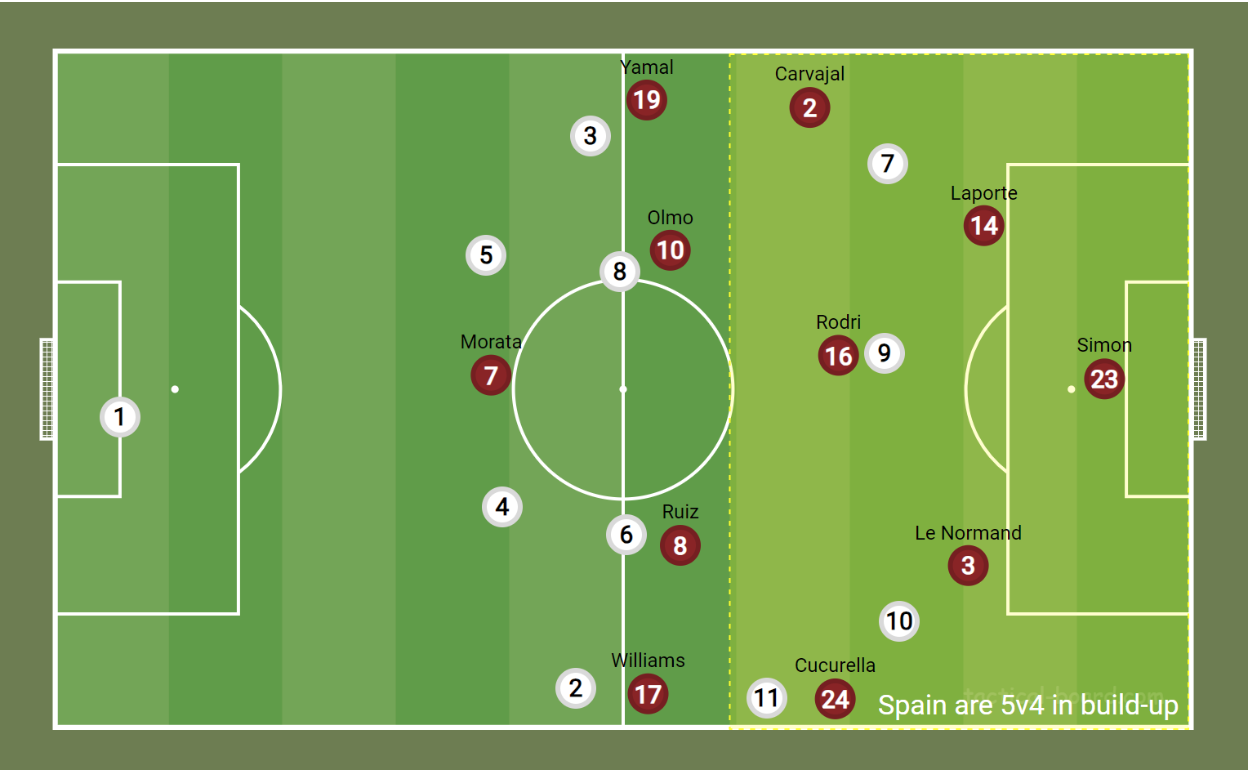
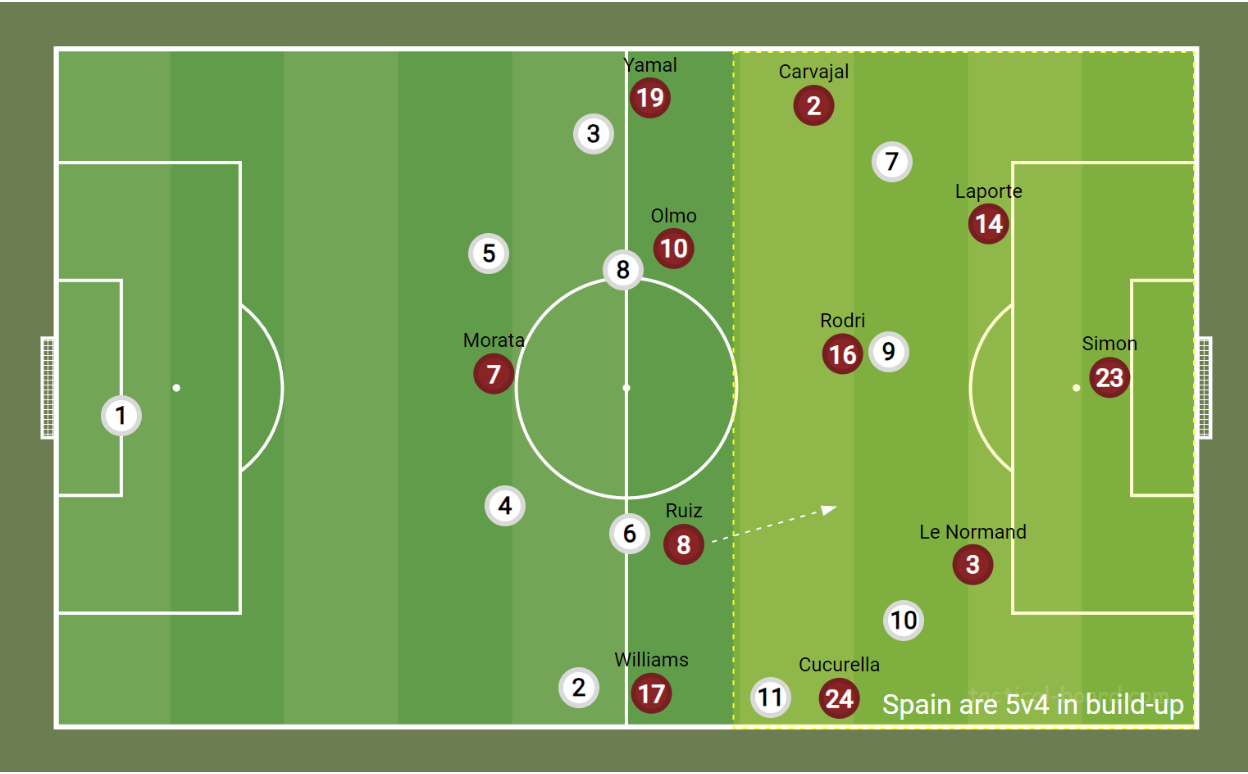
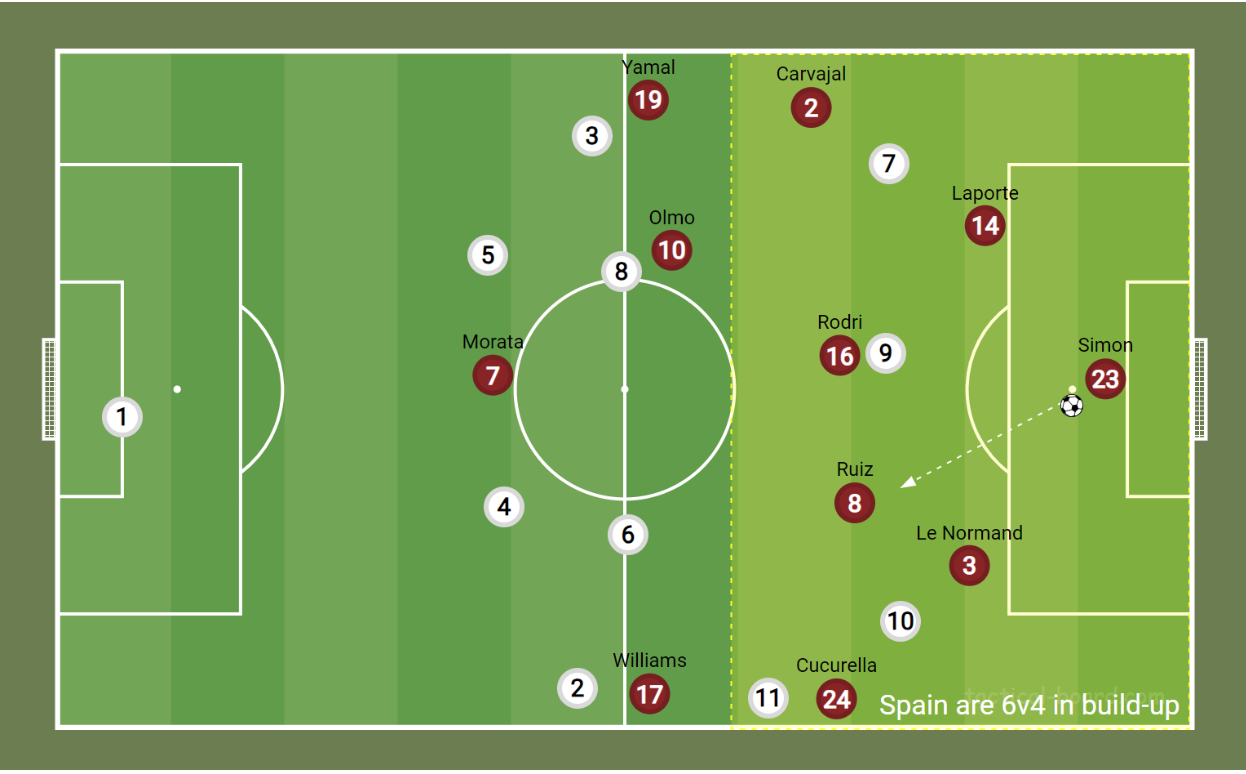
Or, the opposition player will tightly mark Ruiz – opening passing channels into the feet of the striker and allowing direct play from the back to the front since there is more space between and behind the lines.
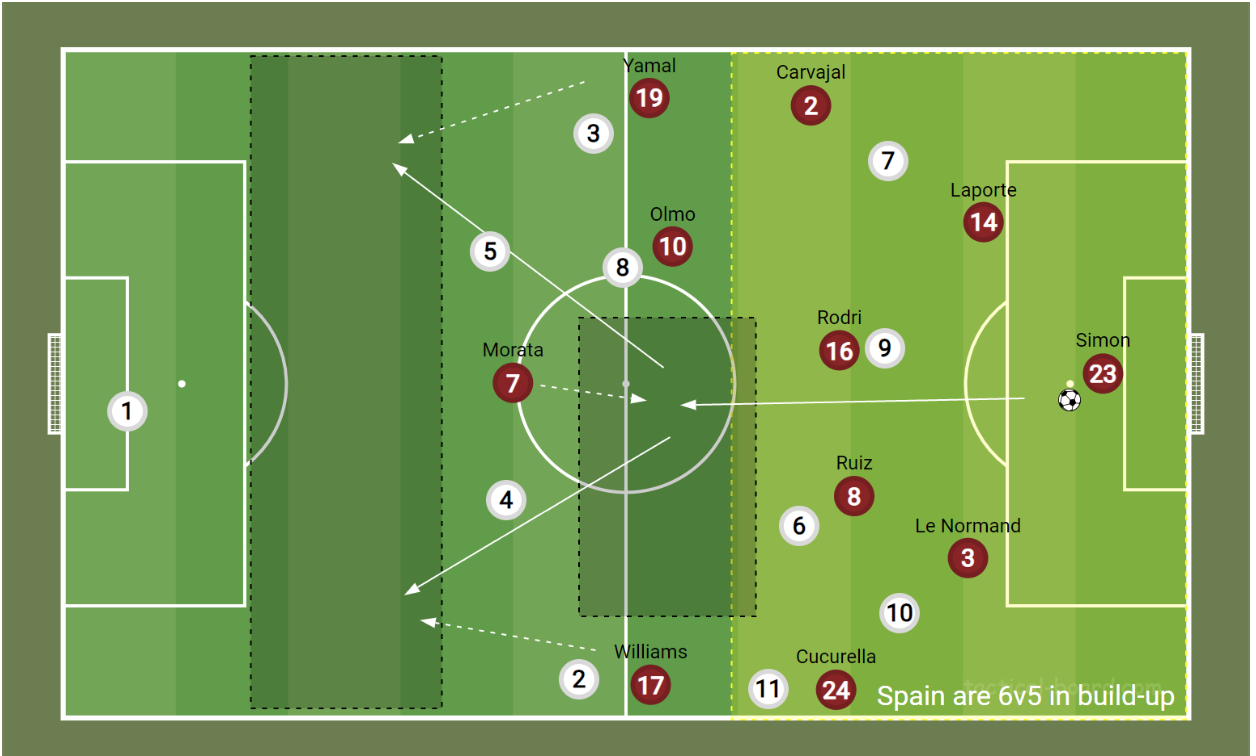
In the middle third, Ruiz would combine with Rodri and the center-back duo to retain possession, shifting the ball from side to side and probing the opposition’s structure to find gaps to exploit. He would also attempt threatening carries into the final third from midfield to cause disruptions in the defensive lines. Therefore, Ruiz was an influential ball progressor for Spain in different ways, as illustrated by the metrics below.
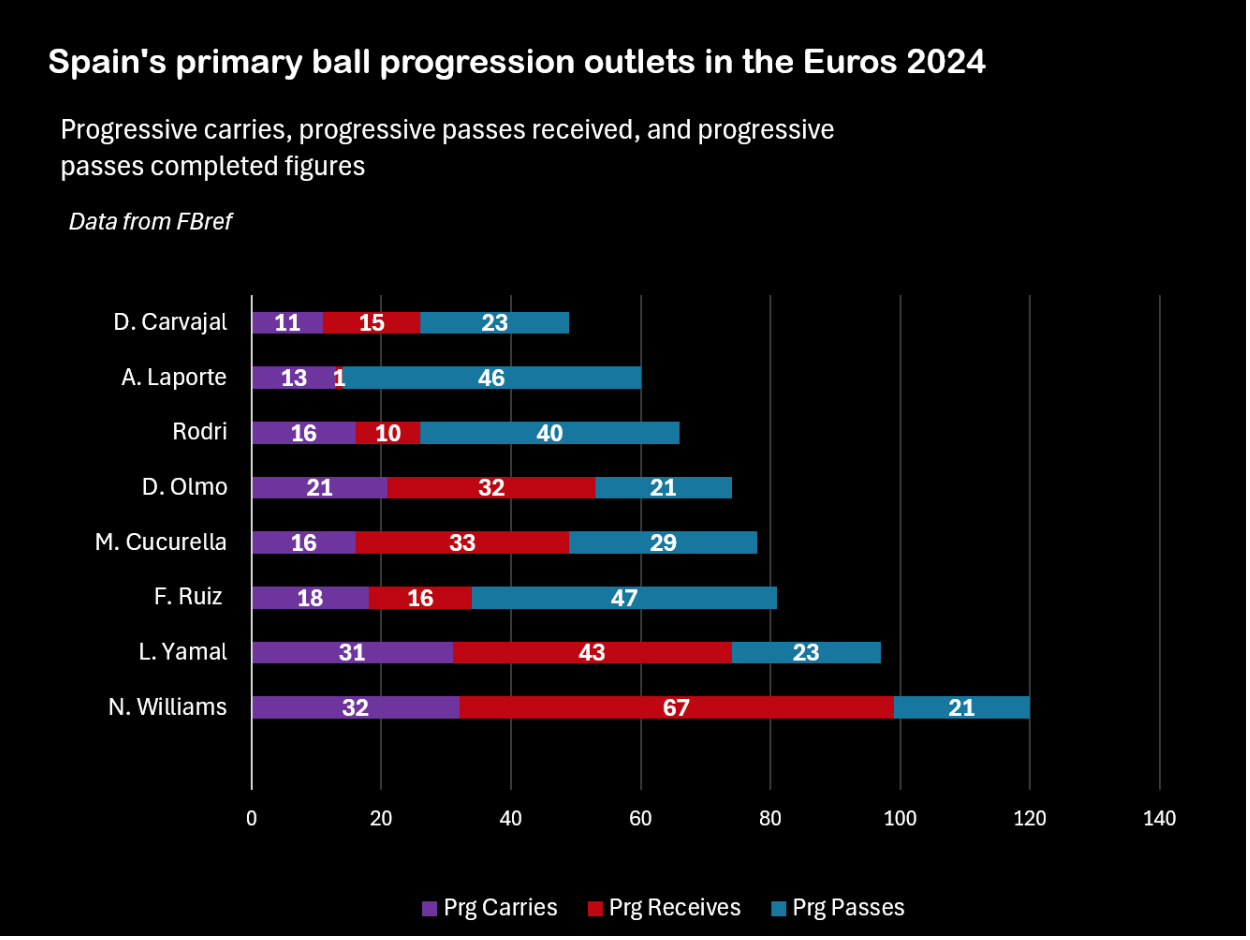
In settled possession, Spain would set up in an aggressive system that resembled a 2-1-6, with the fullbacks positioning high.
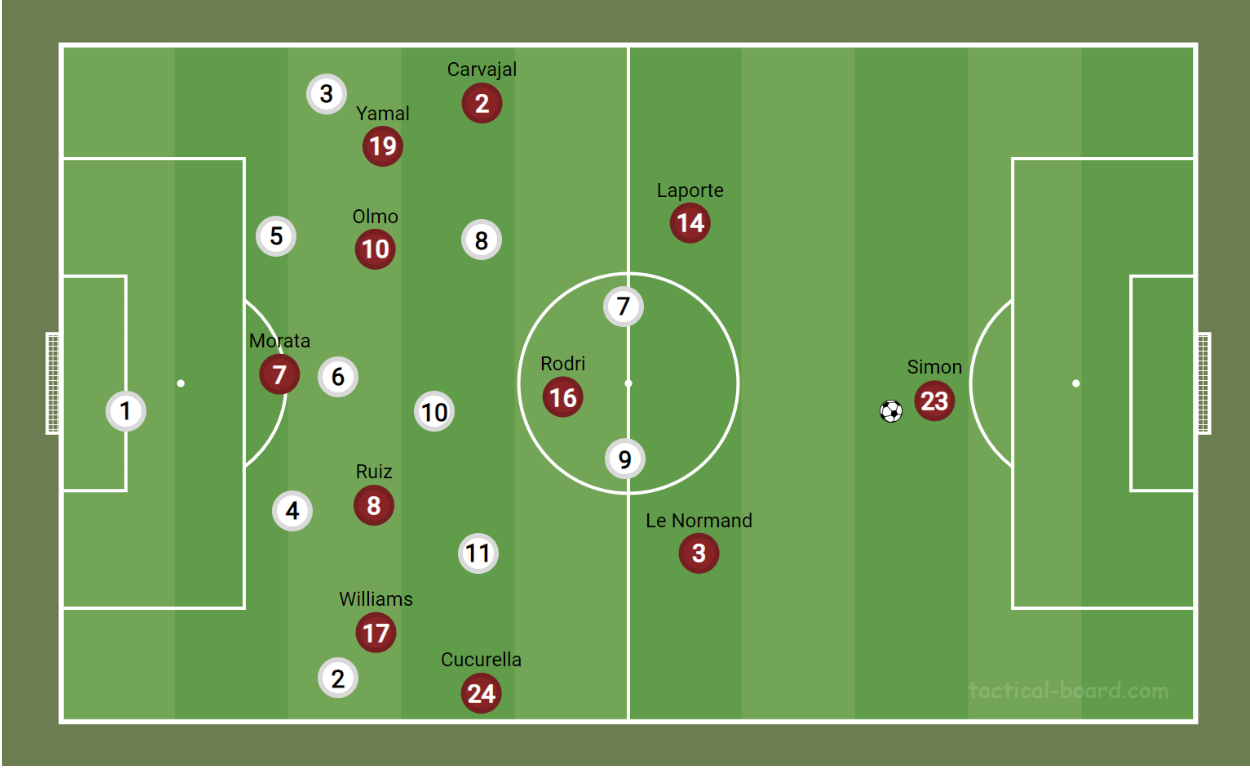
From here, Ruiz would primarily locate himself in the left half-space but be free to float into other zones depending on the in-game situations – as reflected by his tournament heat map on Sofascore.
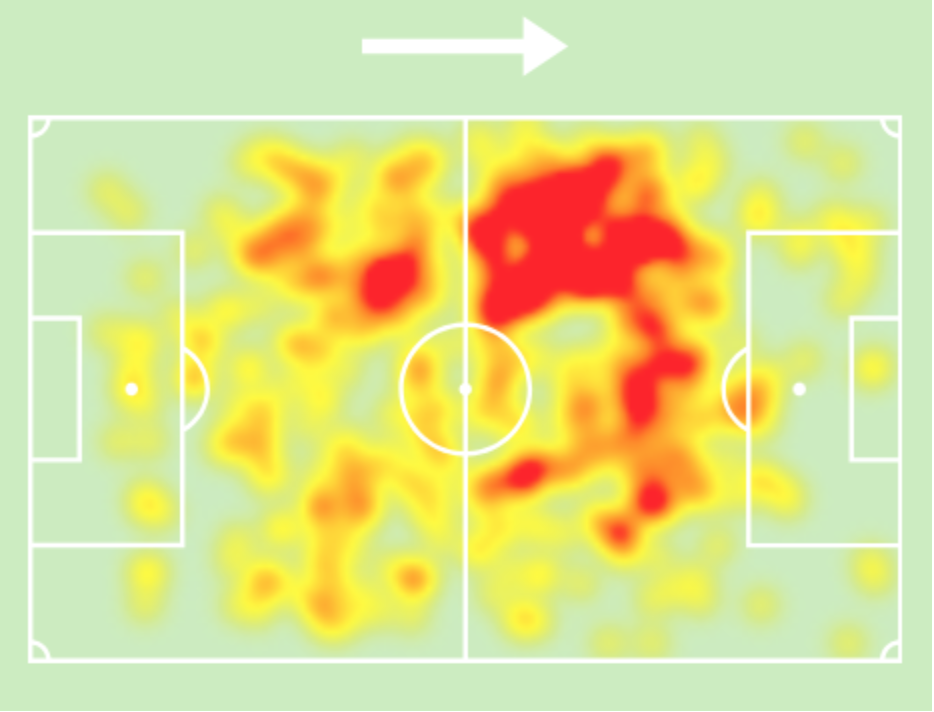
Nevertheless, Ruiz was most threatening on the left, combining Williams and Cucurella to create chances in this area. This was the more influential side for Spain, having generated 44% of their attacking moves from the left, compared to 26% and 34% from the middle and right zones – according to Whoscored.com. Furthermore, Spain was one of the most left-sided teams of the tournament – ranking joint-third for percentage chances created from this area.
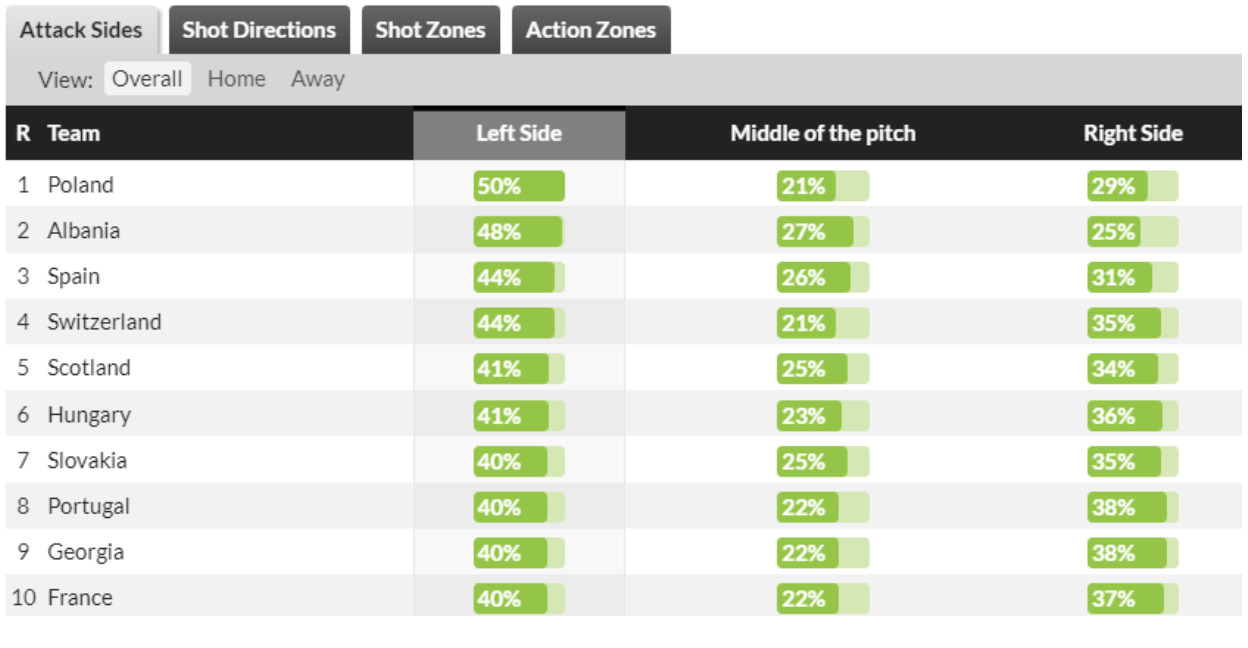
Despite operating deeper during certain portions of the game, Ruiz was still heavily involved in the final third. Through his passing and dribbling, the Spanish midfielder created the fourth-most chances in the squad and the 18th-most in the competition.

All Eyes on 2026
De La Fuente will hope that his team can replicate the accomplishments of the 2008 Euros-winning Spanish side that lifted the prestigious World Cup after two years. To execute such an exploit, the Spanish manager will need to ensure that their offense is sharper than a razor blade and their defense is as impenetrable as a fortress.
Spain’s radically contrasting approach that flowed against the grain of general international tactical systems was a breath of fresh air. Although it was a risky blueprint to carry out on the big stage, the men in red made it work. Moreover, with players like Ruiz capable of enacting intricate roles in the structure, De La Fuente is equipped with the tools to dismantle opposition teams.
With a successful Euro 2024 triumph, Spain will begin to picture the possibility of realizing the same success on the major 2026 World Cup scene and causing another blaze on the international stage.
By: Fahd Ahmed / @fahdahmed987
Featured Image: @GabFoligno / Alessandro Sabattini / Getty Images
